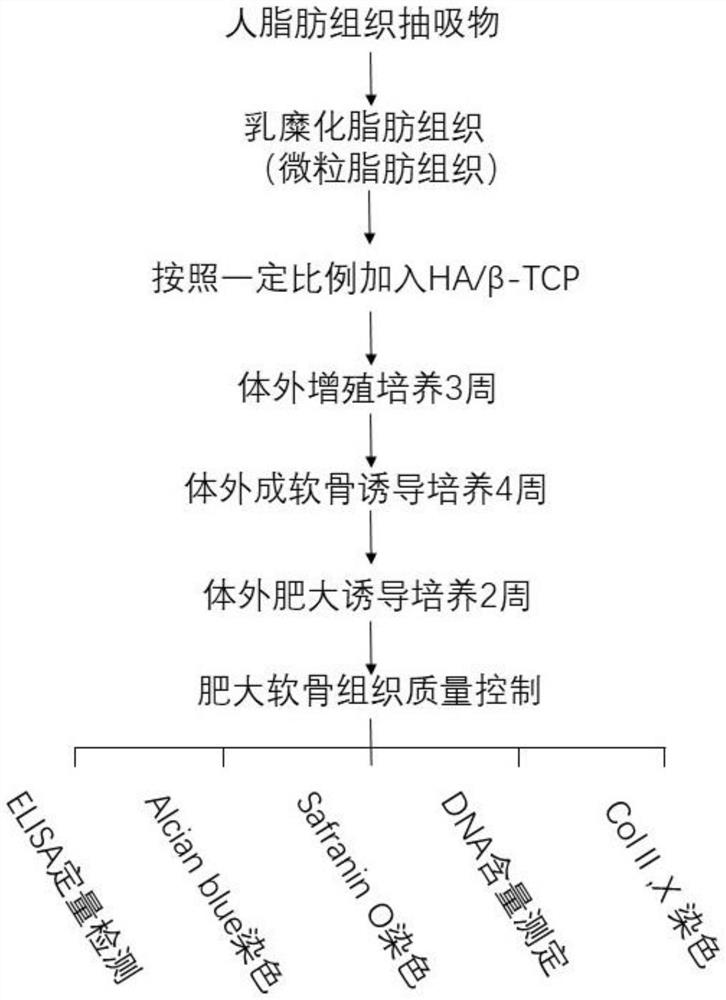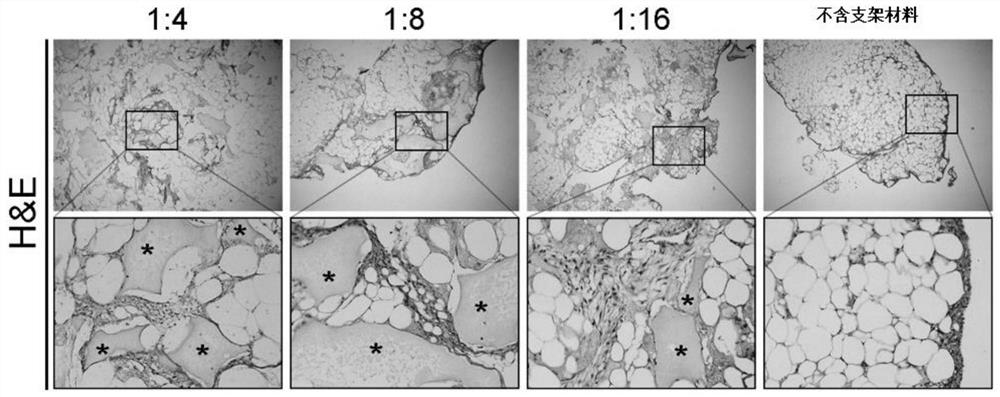Method for direct regeneration of hypertrophic cartilage tissue using adipose tissue and scaffold material
A technology of adipose tissue and scaffold materials, applied in tissue regeneration, bone/connective tissue cells, prostheses, etc., can solve the problem of weakened multidirectional differentiation ability of mesenchymal stem cells, achieve multidirectional differentiation and angiogenesis potential, Effect of promoting osteoclast chemotaxis and promoting bone regeneration
- Summary
- Abstract
- Description
- Claims
- Application Information
AI Technical Summary
Problems solved by technology
Method used
Image
Examples
Embodiment 1
[0067] A method for directly regenerating hypertrophic cartilage tissue using adipose tissue and scaffold material, comprising the following steps (see figure 1 ):
[0068] (1) Preparation of microparticle adipose tissue
[0069] (a) Human adipose tissue obtained from liposuction operation, after repeated rinsing with saline, the upper layer of adipose tissue was collected;
[0070] (b) Cut the upper layer of adipose tissue with scissors, centrifuge at 1200g for 5 minutes, remove the upper layer of fat and lower layer of swelling fluid, and collect the middle fat layer in a 20mL syringe;
[0071] (c) Use a three-way tube to connect two 20mL syringes, inject the two syringes back and forth 30 times, and obtain particulate adipose tissue;
[0072] (d) The particulate adipose tissue was centrifuged at 1500 g for 5 minutes to remove the upper layer of fat layer, and the lower layer was purified particulate adipose tissue.
[0073] (e) Add HA / β-TCP scaffold material to micro-adi...
Embodiment 2
[0095] The difference between this example and Example 1 is that the volume of the HA / β-TCP scaffold material and the particulate adipose tissue is 1:8, and other steps are the same as Example 1.
Embodiment 3
[0097] The difference between this example and Example 1 is that the volume of the HA / β-TCP scaffold material and the particulate adipose tissue is 1:16, and other steps are the same as Example 1.
PUM
 Login to View More
Login to View More Abstract
Description
Claims
Application Information
 Login to View More
Login to View More - R&D
- Intellectual Property
- Life Sciences
- Materials
- Tech Scout
- Unparalleled Data Quality
- Higher Quality Content
- 60% Fewer Hallucinations
Browse by: Latest US Patents, China's latest patents, Technical Efficacy Thesaurus, Application Domain, Technology Topic, Popular Technical Reports.
© 2025 PatSnap. All rights reserved.Legal|Privacy policy|Modern Slavery Act Transparency Statement|Sitemap|About US| Contact US: help@patsnap.com



